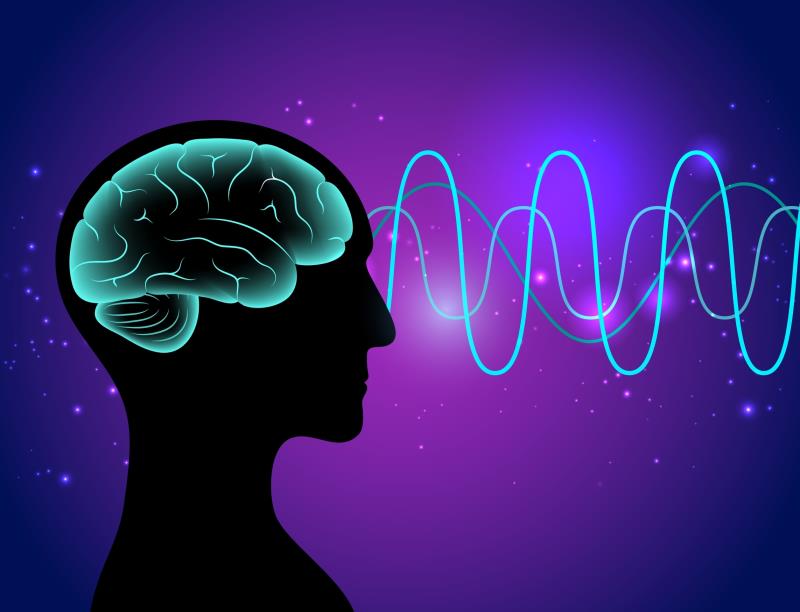Glioblastoma: State-of-the-art therapeutic approaches









Glioblastoma multiforme (GBM) is a highly malignant cancer with a median overall survival (OS) of approximately 1 year. At a recent webinar, experts shared keys to effective management of GBM and discussed state-of-the-art therapeutic approaches, including tumour-treating fields (TTFields), fluorescence-guided surgery, as well as intraoperative ultrasound and neuro-navigation integration.
GBM: The most lethal and common CNS malignancy
GBM, a WHO grade IV glioma, is the most common and lethal malignancy of the central nervous system (CNS). According to the Hong Kong Cancer Registry, GBM accounted for about half of the 279 new cases of malignant CNS tumours in 2019. [Clin Transl Oncol 2016;18:1062-1071; https://www3.ha.org.hk/cancereg/pdf/factsheet/2019/brain 2019.pdf]
"The prognosis of GBM is dismal, with a median OS of 11 months, according to data from the Hong Kong Neuro-Oncology Society [HKNOS] GBM registry," noted Dr Joyce Chow of the Queen Elizabeth Hospital (QEH), Hong Kong.
"Despite medical advances in the last 25 years, OS only increased by 2–3 months [from 11.3 months to 14.6 months], and most patients experienced recurrence and eventually died. Therefore, the key to management of GBM is to reduce tumour load and delay recurrence," Chow said.
TTFields: First breakthrough in GBM treatment in a decade
Following the US FDA's approval of temozolomide (TMZ) plus radiotherapy for newly diagnosed GBM in 2005 and bevacizumab plus irinotecan for recurrent GBM in 2009, there had been no other novel treatment that improved outcomes until the US FDA's approval of TTFields for recurrent or refractory GBM (based on the EF-11 trial) in 2011 and for newly diagnosed GBM (based on the EF-14 trial) in 2015. [N Engl J Med 2005;352:987-996; J Clin Oncol 2009;27:4733-4740; Eur J Cancer 2012;48:2192-2202; JAMA 2015;314:2535-2543]
EF-14: Improved PFS and OS in newly diagnosed GBM
The international, open-label, randomized, phase III EF-14 trial included 695 patients with newly diagnosed GBM who had undergone safe debulking surgery and completed concomitant chemoradiotherapy. Patients were randomized 2:1 to receive TTFields (low-intensity, intermediate-frequency [200 kHz] alternating electric fields delivered >18 hours/day via transducer arrays applied to the shaved scalp and connected to a portable device) plus TMZ (150-200 mg/m2/day for 5 days every 28 days for 6–12 cycles) (n=466; median age, 56 years) or TMZ alone (n=229; median age, 57 years). [JAMA 2017;318:2306-2316]
At a median follow-up of 40 months, a significant improvement in progression-free survival (PFS) was seen in the TTFields plus TMZ vs TMZ alone group (median, 6.7 months vs 4.0 months; hazard ratio [HR], 0.63; 95 percent confidence interval [CI], 0.52 to 0.76; stratified log-rank p<0.001), as was in OS (median, 20.9 months vs 16.0 months; HR, 0.63; 95 percent CI, 0.53 to 0.76; stratified log-rank p<0.001), in the intent-to-treat (ITT) population. (Figure 1)

"TTFields in combination with TMZ is the first treatment option in a decade to show improvements in both PFS and OS [in newly diagnosed GBM]," Chow marked. "Considering that patients with GBM typically live for approximately 1 year after diagnosis, getting another 4.9 months is a significant survival benefit."
EF-14 post hoc analysis: Prolonged OS after first recurrence
After first recurrence, EF-14 patients were offered second-line treatment, including bevacizumab, chemotherapy, surgery, stereotactic radiosurgery, fractionated radiotherapy, or combination therapy, per local practice. A post hoc analysis of EF-14 was conducted to evaluate the efficacy of continuing TTFields with second-line treatment in patients who previously received TTFields plus TMZ (n=336; median age, 57 years) vs starting second-line treatment in patients who previously received TMZ alone (n=112; median age, 56 years). Twenty-six patients in the TMZ alone group crossed over to receive TTFields prior to second disease progression based on positive interim analysis results. Second-line treatment was similar between the two groups, with chemotherapy being the most frequent choice (55–84 percent). [Society for Neuro-Oncology 2017 Annual Meeting, poster ACTR-55]
A significant improvement in OS from the time of first recurrence was observed with TTFields plus TMZ vs TMZ alone (median, 12.0 months vs 10.8 months; HR, 0.75; 95 percent CI, 0.59 to 0.94; p=0.038). (Figure 2) "Continuation of TTFields with second-line treatment after first disease progression was associated with improved OS vs TMZ monotherapy followed by second-line treatment alone," Chow suggested.

Tolerability and QoL
"Based on our clinical experience, treatment with TTFields is typically well tolerated with high compliance [ie, wearing the device for the recommended ≥18 hours per day]," Chow shared.
This observation was consistent with results of EF-14, which showed that the profile and frequency of adverse events (AEs) were similar in both treatment arms (TMZ alone and TTFields plus TMZ), except for skin reactions. In those treated with TTFields plus TMZ, 52 percent of patients experienced mild to moderate skin reactions, while severe (grade 3) skin involvement occurred in only 2 percent of patients. [JAMA 2017;318:2306-2316]
"Over time, patients would learn how to handle dermatologic AEs and thus have an improved experience," said Dr Tak-Lap Poon of QEH, Hong Kong.
Although some patients (7.7–11.3 percent) reported a warm or electric sensation beneath the transducer arrays, none were associated with injury. [Semin Oncol 2014;41:S4-S13] "Importantly, TTFields were not associated with any significant increases in systematic AEs or seizures," highlighted Chow.
Health-related quality of life (QoL), as measured by patient-reported EuroQol's visual analogue scale score (EQ-VAS), was high (median score, 75 out of 100) and was clustered toward the high end of the scale, showing good QoL and health status perceived by TTFields-treated GBM patients. [Front Oncol 2021;11:772261; Monaldi Arch Chest Dis 2012;78:155-159]
Fluorescence-guided surgery
"Maximum safe resection is another key to GBM management, which can be achieved with fluorescence-guided surgery with 5-aminolevulinic acid [5-ALA] or sodium fluorescein," emphasized Chow.
In the phase III ALA-Glioma study, 322 patients with suspected malignant glioma were randomized 1:1 to receive 5-ALA (20 mg/kg; n=161) for fluorescence-guided surgery or conventional microsurgery with white light (n=161). 5-ALA demonstrated more complete resection vs white light (65 percent vs 36 percent; difference between groups, 29 percent; 95 percent CI, 17 to 40; p<0.0001) and improved 6-month PFS rate (41.0 percent vs 21.1 percent; difference between groups, 19.9 percent; 95 percent Cl, 9.1 to 30.7; p=0.0003, Z test). [Lancet Oncol 2006;7:392-401] "In view of 5-ALA's side effect of skin photosensitization, surgery should take place in a dark operation room and patients are advised to stay in a dim environment for 24–48 hours before surgery," reminded Poon.
In the phase II FIUOGLIO trial, 57 patients with high-grade glioma received sodium fluorescein (5-10 mg/kg intravenously) for fluorescence-guided surgery. Results showed a high rate of complete resection (82.6 percent) and a 6-month PFS rate of 56.6 percent. [Clin Cancer Res 2018;24:52-61] "However, sodium fluorescein is affected by vascular leakage [ie, bleeding, tissue trauma], and there are no clear guidelines to show the optimal dose and timing of administration," said Chow.
"Both 5-ALA and sodium fluorescein are viable options for intraoperative fluorescence guidance," commented Poon. In a retrospective study, no significant difference was found between 5-ALA and sodium fluorescein in terms of the extent of resection (median, 96.9 percent vs 97.4 percent; p=0.46) and OS (14.8 months vs 19.7 months; HR, 0.66; 95 percent CI, 0.43 to 1.02; p=0.06). [J Neurosurg 2019;133:1-8] "Importantly, both treatments can be used together to achieve our aim of maximal safe resection," Poon highlighted.
Intraoperative ultrasound and neuro-navigation integration
Combining neuro-navigation and intraoperative ultrasound in image-guided surgery is another way to facilitate maximal safe resection. This is achieved by fusion of preoperative MRI and intraoperative 2D ultrasound images, followed by acquisition of 3D ultrasound images and integration of intraoperative 3D images into the navigation system to monitor the extent of resection. This technique allows real-time imaging, enabling surgeons to see the relationship between tumour and brain. [Front Oncol 2021;11:656020; Acta Neurochir 2011;153:1529-1533; Neurosurgery 2002;50:804-812]
"More importantly, intraoperative imaging can help neurosurgeons cope with brain shift that occurs during craniotomy," Poon said. "Ultrasound can acquire and integrate images in a shorter time than other imaging modalities [ie, MRI and CT], allowing instant identification of brain shift and facilitating safe resection."